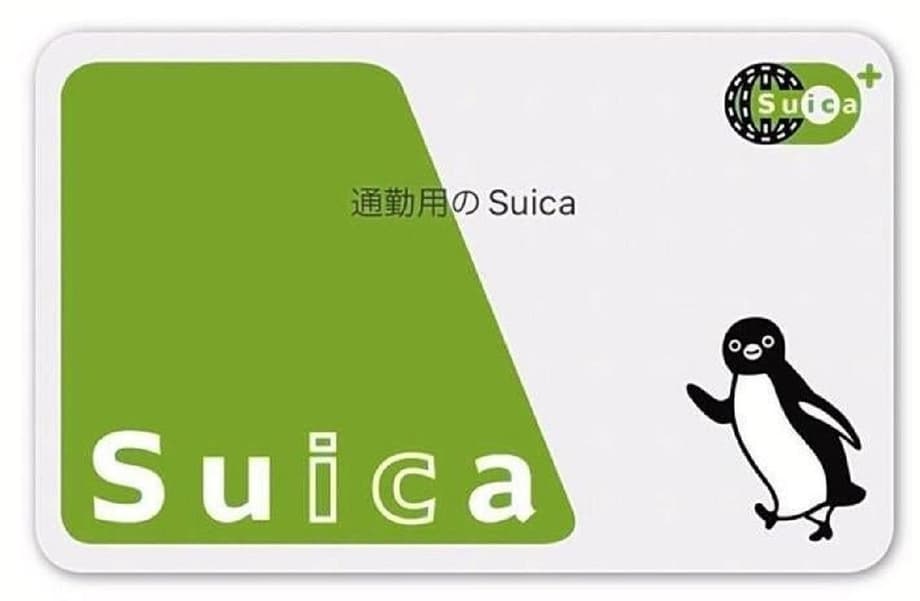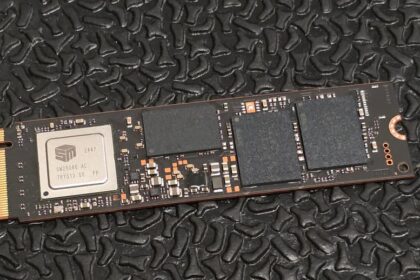Farewell to a familiar commuter icon
One of Japan’s most recognizable faces on the morning commute is signing off. East Japan Railway Company plans to retire the Suica penguin mascot at the end of fiscal 2026, which runs through March 31, 2027. The character has fronted the Suica contactless card and smartphone app since 2001. JR East will introduce a successor mascot, with riders and other users invited to help shape the next face of the brand. The transition comes as Suica prepares a major upgrade, including QR and barcode payments on the app and a sharp increase in the balance limit.
- Farewell to a familiar commuter icon
- What Suica is and why it matters
- Where the penguin came from
- What changes are coming to Suica
- How and when the changeover will happen
- Why retire a mascot that works
- Fan reaction and the role of mascots in Japan
- What riders and collectors can expect until 2027
- What Suica’s upgrades mean for daily life
- How the next mascot might take shape
- What to Know
For a generation of travelers, the calm black and white penguin has been a friendly guide across ticket gates, concourses, kiosks, and café counters. The character appears on cards, posters, station signage, and countless souvenirs. JR East says it will run special campaigns through the retirement date to celebrate the 25 year journey. Around 120 million Suica physical and mobile cards have been issued, and usage spans both transport fares and cashless purchases at shops and machines across Japan.
What Suica is and why it matters
Suica launched in 2001 as a contactless prepaid card for JR East trains, then rapidly expanded across buses, subways, and private railways through interoperability agreements. Tapping a card or phone at the gate cuts boarding time and reduces queues, which is a big benefit during rush hour. The system also works for small purchases at convenience stores, station kiosks, vending machines, and many retailers. A standard physical card requires a 500 yen refundable deposit and can be topped up at machines or service counters. Mobile Suica on smartphones allows riders to charge balances on the go and pass through gates hands free.
Suica’s reach is extensive. More than 2 million retailers accept payments nationwide, and monthly transactions number in the hundreds of millions. Mobile Suica accounts have multiplied in recent years, reflecting the steady shift from plastic to phones and watches. The penguin helped humanize this technology at launch, making a new way to pay feel welcoming and intuitive.
Where the penguin came from
The Suica penguin was created by illustrator and picture book artist Chiharu Sakazaki. The character is modeled after the Adélie penguin of Antarctica, with a minimalist design that reads clearly at card size and on busy station posters. The choice was intentional. A simple, friendly character would age slowly and remain legible in crowded spaces. The penguin’s silhouette became a guidepost for a new habit, tapping to travel, at a time when paper tickets still dominated daily routines.
The character’s popularity spilled into daily life. It appears on stationery, accessories, plush toys, and seasonal campaigns. In Tokyo’s Shinjuku, Suica Penguin Square features a statue that has become a photo spot. The mascot is often described as “graduating,” a common Japanese way to mark the end of a beloved character’s tenure with a positive, forward looking tone.
In a message shared by JR East, Sakazaki reflected on the journey of the character she created more than two decades ago. The illustrator expressed gratitude for its long run and the connection it forged with riders.
Before sharing her words, JR East identified Sakazaki as the original designer of the Suica penguin and the artist behind several picture books. She offered a short note to fans.
It was joy to have been able to spend the past 25 years as the Suica penguin.
What changes are coming to Suica
JR East plans to expand the Suica app’s functionality beginning in autumn 2026. Barcode and QR payments will be added, giving users a way to pay where tap readers are not available. The balance cap will rise from 20,000 yen to 300,000 yen. That is a major shift for a service that began as a fare card and snack money wallet. The higher limit supports larger purchases at shopping complexes attached to stations, travel bookings, and other transactions that currently require other payment methods.
QR codes and why they matter
QR based payments have grown quickly in Japan because they are easy for merchants to adopt. A small shop only needs a printed code or a basic POS screen, not a specialized reader. Suica pioneered fast tap to pay using contactless chips that work in a fraction of a second. Adding QR and barcode options covers places without tap hardware and gives the app parity with rivals that already support scan based payment. The combination of contactless and QR broadens acceptance for users while keeping the speed advantage at transit gates where tapping is still the gold standard.
JR East says that Suica’s expanded features are part of a new phase for the service. The penguin’s retirement aligns with that pivot. A fresh character will launch with the updated platform, positioned as the face of a tool that stretches beyond commuting to everyday payments and station life.
How and when the changeover will happen
The penguin will retire at the end of fiscal 2026. Japan’s fiscal year runs from April 1 to March 31, so the handoff will occur in spring 2027. JR East plans to involve riders and other users in selecting and shaping the new mascot. Details on how to participate will be released later. The company has promised a series of farewell events, limited designs, and thank you campaigns leading up to the retirement date.
During a briefing, JR East President and CEO Yoichi Kise explained that public participation is part of the plan for the next character. He framed the mascot search as a chance to bring users into the creative process.
After introducing him as the company’s chief executive, JR East relayed his message on involving customers in the next step.
We’re thinking that we’d like our customers to be involved in some form with the process of creating a new character.
Why retire a mascot that works
The penguin has done what few brand characters achieve. It bridged technology and daily life without shouting for attention. Retiring such a symbol is a bold decision. JR East is repositioning Suica from a transit product to a broader payments platform. That includes new features on the app and a higher stored balance that rivals the capacity of popular smartphone payment services. A new mascot can signal that the service has grown up and now serves a wider set of needs, while preserving the warmth that helped users adopt an unfamiliar system in 2001.
Competition in cashless payments has intensified. Smartphone based services attract users with loyalty points, discounts, and deep integration with retail chains. Suica’s edge is its speed and reliability at gates. By widening acceptance through QR and raising the spending ceiling, JR East is addressing areas where it previously ceded ground. The mascot refresh is part of that repositioning. It marks a new chapter without erasing the brand’s history.
Fan reaction and the role of mascots in Japan
The announcement sparked a wave of nostalgia online. Many users shared memories of buying their first Suica and noticing the small smile on the card. Interest spiked for merchandise as collectors anticipated final editions. The JRE Mall store that sells official penguin goods saw heavy traffic on the day of the announcement, with slow loading reported as fans rushed to browse.
Japan’s affection for mascots runs deep. Companies, towns, and agencies often use cute characters to make services feel approachable. The Suica penguin is a model of how a simple design, repeated consistently, can build trust and recall. It also shows how a character can evolve with a product. The penguin started as an introduction to a new fare technology. It became a guide to daily life in and around the station, where riders buy coffee, pick up lunches, and shop between trains. The choice to present the retirement as a graduation fits that culture, signaling respect for the character and the people who loved it.
What riders and collectors can expect until 2027
JR East plans multiple farewell campaigns through the end of fiscal 2026. Riders can expect themed promotions in stations, special art on posters, and likely limited card or mobile designs that mark the 25 year milestone. Official details will arrive over time, and participation plans for the next mascot will be announced by the company when ready. For collectors, the period before retirement may bring time limited items. Buying from official channels is a safe way to avoid counterfeits as demand rises.
Everyday use will continue as normal. Suica cards and the app remain valid. The shift to QR and barcode payments will start in autumn 2026, and the higher balance cap will roll out with the app changes. The penguin’s departure does not affect the core tap to ride function. Gates will still work with cards and phones, and riders can keep using Suica for small purchases at partner stores. The new mascot will arrive after the farewell period, alongside a Suica that does more than it did in 2001.
What Suica’s upgrades mean for daily life
Higher balance limits reduce friction for bigger station side purchases. Many railway hubs include large malls, supermarkets, and travel counters. Being able to pay for a bundle of items or a mid range purchase without swapping to a different payment app can be convenient. For small shops that accept QR codes but lack tap readers, the app’s new scan option fills a gap. Travelers who move between cities may also find it easier to rely on a single app for both transport and shopping, rather than juggling multiple cashless tools depending on the store.
For tourists, Suica on phones is already a popular choice. The expanded balance and payment options will make it even more useful beyond the station. For residents, the change puts Suica closer to feature parity with leading cashless services while keeping the speed and reliability that made it a staple at gates. The mascot handover will draw attention, but the daily impact will come from how much more the app can do.
How the next mascot might take shape
JR East has said that passengers and other users will have a role in the selection process. Public involvement can range from idea submissions to votes on shortlisted designs. Companies in Japan often invite feedback on character naming or design elements, which helps build early affection. The next character will inherit a big task. It must feel friendly, work in tiny sizes on screens and cards, and scale up to posters and signage. It should also sit comfortably in the Suica world, which includes stations, trains, shops, and apps.
The penguin had no official name yet still felt personal to millions. The successor could introduce a name to help with storytelling or keep to a simple concept that lets the service, not the character, take center stage. Whatever the choice, JR East’s plan to involve customers suggests the design will aim for instant familiarity and utility across many contexts.
What to Know
- JR East will retire the Suica penguin mascot at the end of fiscal 2026, which is March 31, 2027.
- A new mascot will replace the penguin, with public participation planned for the selection process.
- Farewell campaigns and special promotions will run through the retirement period.
- Suica’s app will add barcode and QR payments starting in autumn 2026.
- The Suica balance cap will rise from 20,000 yen to 300,000 yen.
- Around 120 million Suica physical and mobile cards have been issued to date.
- Over 2 million retailers accept Suica payments, and transactions number in the hundreds of millions each month.
- The penguin’s creator, illustrator Chiharu Sakazaki, thanked fans and expressed joy at the character’s 25 year run.
- JR East’s CEO Yoichi Kise said customers will be involved in creating the next mascot.
- Suica’s tap to ride function continues unchanged during and after the mascot handover.











